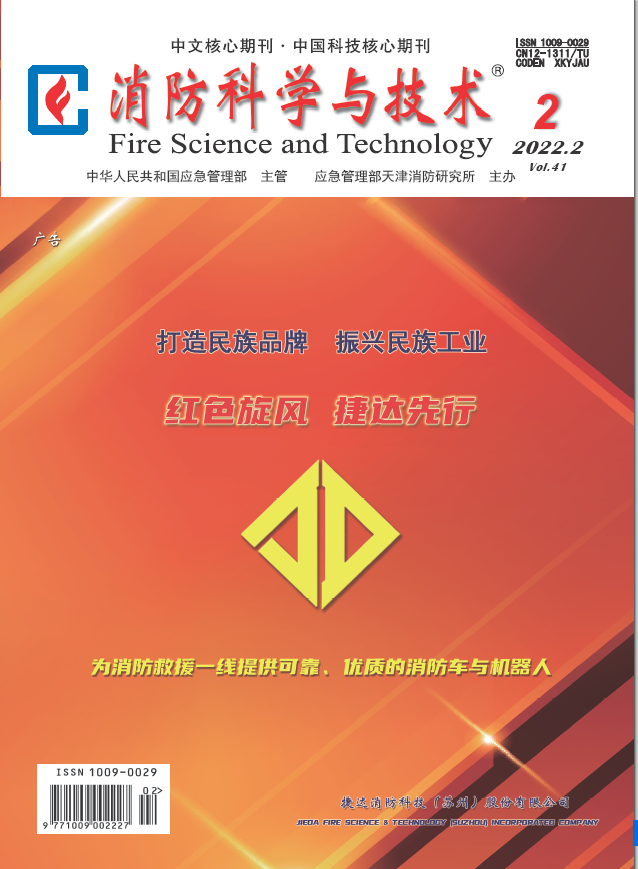|
|
Effect of fuel coverage on vertical fire spread behavior of discontinuous solid
2022, 41 (2):
201-205.
Discontinously distributed solid fuel refers to the state where multiple solid combustibles are very close but separated by air gap. Compared with continuously distributed fuel, discontinously distributed fuel can represent some real fire situations. However, there is little research on this in the previous research, so this paper analyzes the characteristics of vertical upward flame spread of solid fuel under different fuel coverage by experimental method. The PMMA materials selected are widely used in the facade of high-rise buildings, showing a discontinously distributed state. This paper reasonably simplifies the usage of PMMA in the facade of high-rise building, uses the fireproof back plate, steel base and steel support to build the vertical fire spread experimental platform of discontinously distributed solid fuel PMMA, and carries out the vertical fire spread experiment of solid fuel under different fuel coverage of 10% ~ 90%. Based on the solid ignition model and the solid surface downstream fire spread model, the obtained data are compared to analyze the effect of fuel coverage on flame morphology effects of flame height, mass loss rate, pyrolysis front position and fire spread rate. At the same time, combined with the previous understanding of the behavior law of solid fuel vertical fire spread, the mathematical relationship between flame height and average mass loss rate in the stable combustion stage is obtained. Finally, the prediction equation between average fire spread rate and fuel coverage is given by fitting, and the flame spread rate under other working conditions is predicted. According to the results of corresponding experimental conditions, when the fuel coverage is less than 10%, the flame cannot spread upward smoothly. When the fuel coverage is not more than 30%, the phenomenon of "flame splitting" occurs in the process of upward flame spread. When the fuel coverage is not more than 50%, the pyrolysis process appears the phenomenon of "ignition lag", that is, when the pyrolysis front reaches the upper edge of the first layer of fuel, the second layer of fuel surface needs to continuously absorb heat for a period of time before pyrolysis can occur. In the steady combustion stage, the flame height and the average mass loss rate meet a certain proportional relationship. According to the fitting formula between the average fire spread rate and fuel coverage, it can be predicted that the maximum fire spread rate will be reached when the fuel coverage is 62.55%. With the increase of fuel coverage, the flame height and mass loss rate increase first and then decrease due to the competitive relationship between them, and reach the peak when the coverage is 60%. With the increase of fuel coverage, the pyrolysis time decreased first and then increased. When the fuel coverage is 60%, the pyrolysis time is the shortest. When the fuel coverage is not more than 50%, the heat flux from the flame body can be received on the solid surface, so it takes more time to reach the pyrolysis temperature, the pyrolysis process lags obviously, and the pyrolysis is no longer continuous. For PMMA materials used in the building facade, the fire spread behavior will be affected by the fuel coverage. Reasonably setting the utilization rate of PMMA materials has guiding significance for the fire protection design of the building facade.
Related Articles |
Metrics
|



